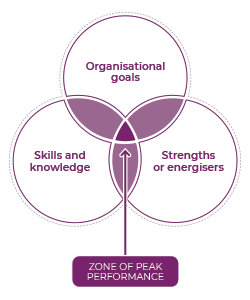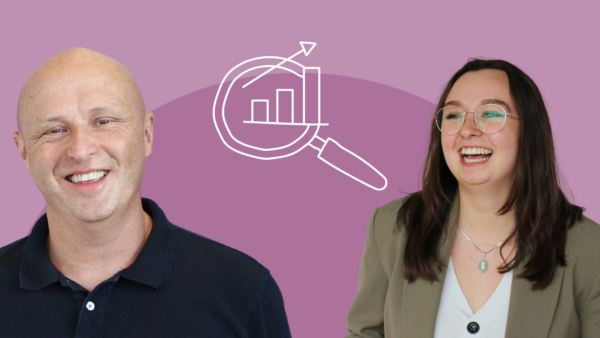Strengths and competencies – what’s the difference anyway?
A question I get asked pretty often is what is the difference between strengths and competencies – are they the same thing, or different ways of looking at the same thing, or are they different things completely? Today’s podcast is a response to those questions. I would like to thank Aman Zaidi, one of our Strengthscope practitioner community, for suggesting this as a podcast topic. It’s a great idea, and I welcome suggestions on future podcast topics from any of our listeners or viewers, just email me directly at paul.brewerton@strengthscope.com as I’m always available for requests.
OK – to today’s topic on strengths vs competencies. Let’s start by defining both.
Competencies are what exactly?
So the term competency – as used by HR pros in organisations today – started life probably in the late 1970s and early 1980s and it’s often the psychologist Richard Boyatzis who is seen as kicking off the idea of competencies in the corporate HR world.
There is no single accepted definition of competency as it’s quite a broad area but something along the lines of competence or competency being a ‘demonstrable characteristic or skill that enables a person’s effective performance in a job feels like a good start.
And strengths – how are they different?
Contrast that with the Strengthscope definition of a ‘strength’ – a strength is a ‘quality that energises you and that you are great at or have the potential to become great at.’
The two are pretty different, right? Same territory – effectiveness at work and personal characteristic related – but while competency is very role-specific and skill-specific, a strength is more about the underlying energy and potential that might power a competency.
What’s the science behind strengths then? Because competencies are well-established
Quick walk down (my) memory lane. You may or may not know this, but Strengthscope® (the strengths assessment tool we developed back in 2006) has achieved test registration status with the British Psychological Society. In short, what that means is that social scientists have scrutinised Strengthscope® and concluded that it is fit for purpose in terms of it being reliable (measuring strengths in a consistent way over time and situation) and valid (it actually measures what it says it measures, i.e. 24 work-related strengths).
There was something a bit special though about the test registration process for Strengthscope®. Psychologists at the British Psychological Society, in fact most social scientists, are a pretty conservative bunch. They follow the principles of research that underpin all scientific endeavour – appraising evidence and weighing up the supportive evidence for a hypothesis or theory, as well as evidence that doesn’t support the hypothesis or theory. And that’s a good thing – it’s what makes psychology, and all science, work. And it’s a fundamental value of mine too – to look for the evidence for and against when evaluating anything – to help us make a decision on whether something is valuable or not.
The thing with Strengthscope® though and particularly, the test registration process for Strengthscope®, was that no one had ever before tried to gain registration for a strengths assessment. So the scientists peer reviewing Strengthscope® had to be in super-scrutiny mode to find out what the strengths approach in itself, and Strengthscope® as a tool, were both measuring. Was it something different from, or similar to, existing concepts – like personality or motivation or competencies – as these were all established methods for assessing human behaviour at the point that Strengthscope® came onto the radar.
So after all that, is there a difference between competencies and strengths?
I’m delighted to say that on going through the British Psychological Society process, the reviewers concluded that Strengthscope® is measuring something different from those other things I mentioned. We cover that in detail in the Strengthscope® technical manual which is always available on request.
In summary, there are relationships between Strengthscope® and measures of preference (like Myers Briggs) and personality (like the Hogan Personality Indicator) but Strengthscope® measures something over and above these established measures. The same is true of Strengthscope® when considering strengths vs competencies – they each measure something useful, but those things are different.
So after that brief trot into Strengthscope’s past, let’s get into the details of how strengths and competencies are different and what that means practically in the world of people development.
I have four main differences to share with you:
-
Competencies are role-driven, strengths are human-driven
Firstly, competencies are job-driven and specific to the role. And strengths are person-driven and cut across role boundaries. Let me explain. You see competencies quite often on a role description or person specification – because these are the qualities that an organisation expects you to be able to deliver in the role in order to carry it out effectively. And in recruitment, you might even be asked to provide evidence for this, if it’s a competency-based interview for example or if you are asked to attend an assessment centre.
For strengths on the other hand, they are your energisers, your motivators, they can drive your performance in role almost irrespective of the competencies required of the role. They are human first. You can still be asked for evidence of when you’ve used your strengths to deliver the outcomes required in a role during recruitment, but that’s more about your awareness of your unique strengths and how you’ve used them to make a positive difference, rather than it being about evidence of specific competencies that you’ve built up experience of in the past.
-
Competencies take a normative approach, strengths take a spike approach
Here’s the second difference: competencies take a ‘normative’ approach to role design and people development – the aim is to develop rounded individuals who can achieve the required level across the competencies identified for a role. Strengths on the other hand take more of a ‘spike’ approach if you like – looking for individual uniqueness, the what sets somebody apart, and then encourages people to step into that potential and apply it, as well as grow it.
The idea is that you can use a strength to achieve the required level of competence across a bunch of competencies when you know that you have a strength and develop strategies for how to use it. More on that in a minute.
-
Competencies can drain energy, strengths empower and energise
My third difference is this. When you consider energy (that is what energises us as humans, not the global energy crisis), it’s true to say that the achievement of a required competency level can sometimes drain people, particularly if it’s in an area that they find unnatural or particularly challenging. Strengths on the other hand are energising, they strengthen and empower people and make them feel that they can take on challenges and achieve higher levels of performance, in a way that is more natural for them.
Getting practical, if you can flip your thinking around achieving a standard in a competency area which, on the face of it, drains you, towards using your strengths, then you should find a natural reserve of energy which can help you meet a competency standard. Take a competency of ‘communication’ for example – maybe we’re defining that as ‘states own opinions clearly and concisely; listens well during meetings and feedback sessions; explains reasoning behind own opinions’. You may always have struggled with some or all of those areas of competence. But if you bring your strengths in, so many of them can help. Enthusiasm, Critical Thinking, Empathy, Collaboration, Results focus, Emotional control – in fact, it’s tough to think of a strength that couldn’t help you communicate better if you have a strategy to apply it in that area.
-
Competences describe current performance, strengths are also concerned with future potential
Finally, competencies describe the current required standard of performance or effectiveness. Strengths on the other hand, focus on your potential for developing competency in each area. Once again, when you know your strengths and once you are able to continually develop new strategies for applying them across different roles and contexts, that self-awareness around strengths can help you achieve the standard of performance required even in areas where you have little or no prior experience.
Do you need both strengths and competencies or can we get away with just one?
Those are some of the differences between the strengths and competencies. However, I believe that both are helpful in managing and developing people at work. In fact, peak performance is achieved when employees:
- Have the skills/competencies required by the role
- Love what they do (i.e. use their strengths in their role)
- Align their competencies & strengths with organisation’s goals and values
In the blog version of the podcast, I’ve included a diagram that explains that visually.
What I’m saying here is that effectiveness in a role is more than just about having the right competencies…the intersection with strengths builds on your skills. And adding the clarity of the goals you’re working towards (particularly when they’re aligned with the organisation’s goals) gives you focus.
In conclusion – head to www.strengthscope.com for more
I hope you’ve found today’s podcast useful – please do reach out if you have any questions or any suggestions for further podcasts. For now, I’ll direct you to www.strengthscope.com to get your hands on the blog version of this week’s podcast and that Venn diagram which shows strengths, competencies and organisational goals overlapping to create a peak performance sweet spot. Till next time, stay strong.












